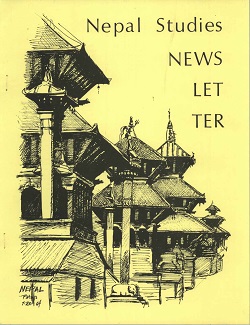Author Biography
Anisa Bhutia is a PhD Scholar at Tata Institute of Social Sciences, Mumbai. She has been working on the entanglements of Islam and Tibet since 2012. Her MPhil dissertation looks at the intricacies between the relation of Islam and Tibet through the so-called ‘Tibetan Muslims’ settled in Srinagar, Kashmir. Her doctorate research is a study of goods, trade, economy, and cosmopolitanism in Kalimpong town in the eastern Himalaya. She is a recipient of the DAAD Exchange Scholarship to the University of Münster and the Inlaks Research Fellowship to King’s India Institute, London. She is an aspiring anthropologist who works on border studies, mobility, connections, migration, region, memory, and belonging.
Abstract
In Tibet, Muslim traders and subsequent settlers from Kashmir were called Khache. Over the years, this term has come to acquire multiple significations. By engaging with the complex history of the group and their eventual return to Kashmir, this paper tries to uncover these very significations and how the idea of Khache represents a coming together of the Himalayan region (Tibet, Nepal, Kashmir, Darjeeling, Kalimpong). In their multi-layered notion of belonging, there is a strong sense of attachment to the imagined Tibet, reflecting a harmoniously lived life, while further complexities emerge from their repatriation to the ancestral land of Kashmir. Referred to as Kashmiri Muslims (loosely, Khache) in Tibet, and now as Tibetan Muslims in Kashmir, the confusion in identity is as much linguistic as political. We should also note that regional prefixes such as ‘Tibetan’ or ‘Kashmiri’ don’t just fixate associations with regions, but also with regimes of power and powerful agents. As such, through this article, I am trying to argue for a geographically and politically neutral or at least less problematic term Khache. Finally, this paper is an ethnographic examination of how different representations and regional influences can be witnessed in everyday life performances for this group, and how these ultimately shape their sense of being. In the same vein, we will locate Islam emerging as a constant and source of justification to life's trials and tribulations – as often portrayed by the analogy to hijrat – the journey to save one's religion.
Acknowledgements
First and foremost the author would like to thank Tridibesh Dey for helping navigate the way around this topic. The article would not have taken its current form without the many conversations, dialogues and his insights. Further, the author would like to thank the editors of Himalaya journal for making possible this special issue of Himalayan Ummah. Furthermore, the author would also like to thank the two anonymous reviewers who helped strengthen the article through their rigorous feedback. Additionally, the author extends gratitude to all the academics whose conversations have helped develop this work. Not to forget her community spanning all throughout the Himalayas and beyond without whose sincere conversations and co-operation, this article could not have assumed its current form. Last but definitely not least; the author would like to thank her family and friends.
Creative Commons License

This work is licensed under a Creative Commons Attribution-Noncommercial-No Derivative Works 4.0 License.
Recommended Citation
Bhutia, Anisa. 2018. Longing, Belonging and the Politics of Naming: The Case of the Khache. HIMALAYA 38(2).
Available at:
https://digitalcommons.macalester.edu/himalaya/vol38/iss2/8


